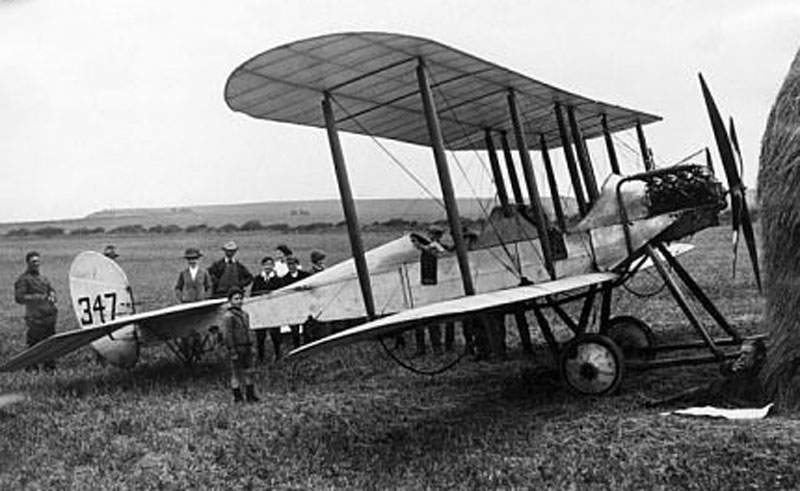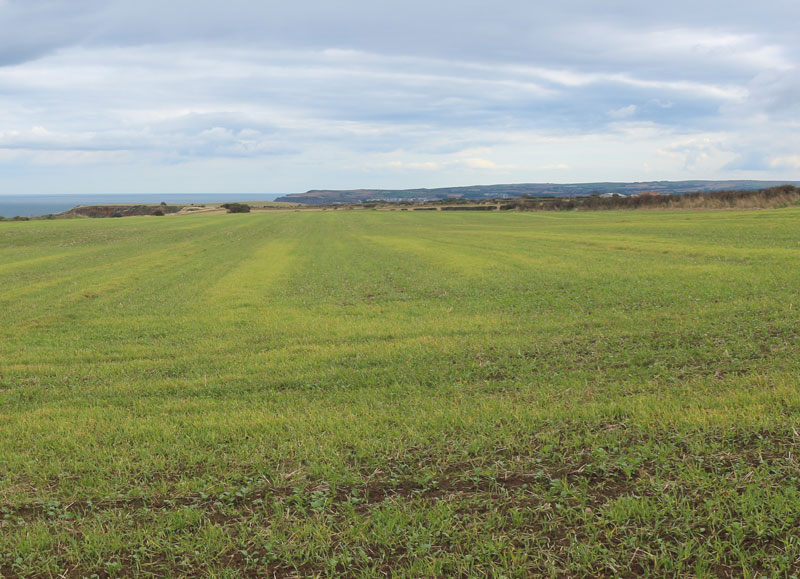
B.E.2a 347. (Photograph credit Imperial War Museum ref "IWM Q 54985").
During mid-July 1914 No.2 Squadron, Royal Flying Corps were undertaking a squadron move from Netheravon aerodrome, on Salisbury Plain, up to Montrose. For this flight the squadron were using a coastal route that involved flying up the east coast of Northern England. This was the first time that they had flown this route and it came after many aeroplanes of the same unit had had to force land two months earlier flying a route down the Vales of Mowbray and York that saw a number crash and two airmen killed. During this flight in mid-July 1914 the aeroplanes were forced to make planned overnight landings at various pre-determined landing sites so that their road party could keep up with them. The part of the flight across Yorkshire is of interest to me and feel it requires better documenting here. The road party must have gone in advance because the flight had set out from Netheravon on Monday, 13th July 1914 and it appears that nine aeroplanes reached Nettleham Hall Farm, Lincoln that night, this was possibly all nine aeroplanes though I have not been able to fully determine how many set out from Netheravon as yet. The road party would not be able to drive this distance in one day if they had set off after the aeroplanes had taken off. On 14th July 1914 the nine aeroplanes planned to fly to Scarborough Racecourse. One suffered engine trouble and the pilot was forced to land in a field in the Swaythorpe area, just south of Octon on the Yorkshire Wolds. The remaining eight reached Scarborough that day and landed without incident. Unfortunately poor weather then came in and prevented the aeroplanes from going any further north for a few days. In the time they were at Scarborough the one that had landed at Octon was repaired and flown to Scarborough. A civilian pilot named Bentfield Hucks was giving aerial displays over the beach during the same week and combined with the military aeroplanes on the ground near the town it must have been a remarkable sight. A storm on the night of 16th July 1914 damaged a propeller on one of the B.E.2's. This aeroplane saw a team with transport left at Scarborough to repair it when the main road party set out for Berwick on this date. It would give the main road party time to reach where the aeroplanes would next land once their flight was resumed. Eight of the nine at Scarborough finally got away on the morning of 18th July 1914 when the weather finally improved and headed north up the coast heading towards Berwick. They appear to have gone in at least two groups; the first had five, with three following later and the one being repaired either joining the remaining three or flew solo. The weather was good on the 18th July 1914, they reached Whitby and were seen to fly over the town. One of this group of the first five must have had a minor problem as a forced landing was made in a field on the cliff top near Goldsborough, no damage resulted and by following newspaper reports it appears to have got airborne again later that day. This incident has been poorly documented elsewhere in the past that stated the aircraft was being flown south, ie between Montrose and Netheravon and in June 1914 but this is very much incorrect. The aircraft was undamaged, as can be seen in the photograph above, which shows the pilot reading a map beside his aeroplane.
B.E.2a 347 was built by Coventry Ordnance Works and was delivered to 2 Squadron, RFC on 26th February 1914. On 3rd August 1914 2 Squadron were en-route from Montrose to Farnborough when Lt Harvey-Kelly became detached from the rest of the flight in bad weather and made a landing at Kettering, damaging the undercarriage. 2 Squadron were heading south to prepare to fly across the English Channel and join the First World War. While the Imperial War Museum quote June 1914 when the landing of 347 happened at Goldsborough it is not beyond the realms of possibility that it happened just prior to 3rd August 1914 on the flight south.
Pilot - Lt Hubert Dunsterville Harvey-Kelly RFC.
Observer - Name unknown.
The general area of where I believe this forced landing was made, as seen around 107 years after the incident.
Lt Harvey-Kelly tipped B.E.2 236 on to it's nose on landing at Montrose on 24th April 1914. He had the honour to become the first pilot to make a landing in France in the First World War, on 13th August 1914 he flew RFC B.E.2a 471 from Dover to Amiens. He was awarded the DSO on 18th February 1915. On 25th April 1917 the SPAD he was flying was shot down over German lines and he was seriously injured, he sadly then died in a German field hospital on 29th April 1917. He is buried at Brown's Copse Cemetery, Pas-de-Calais, France.
